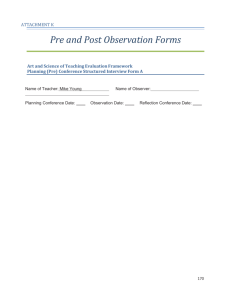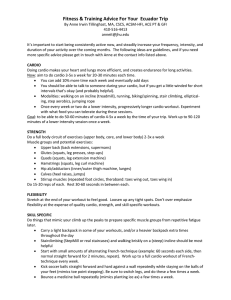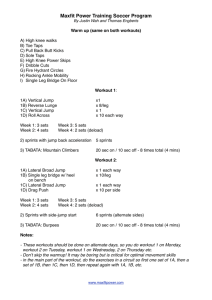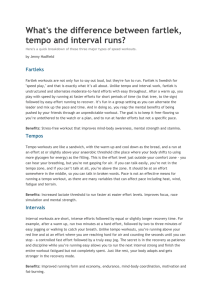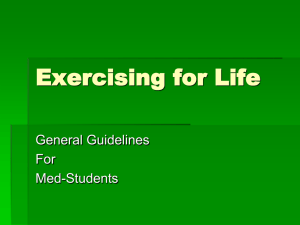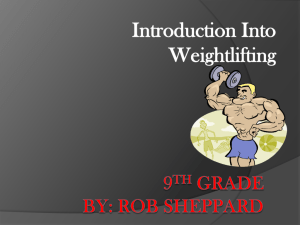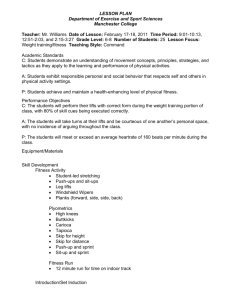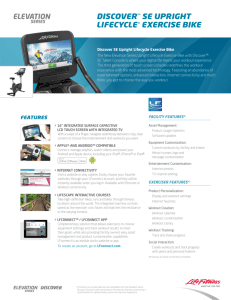Formal Observation - Lemon Bay High School
advertisement
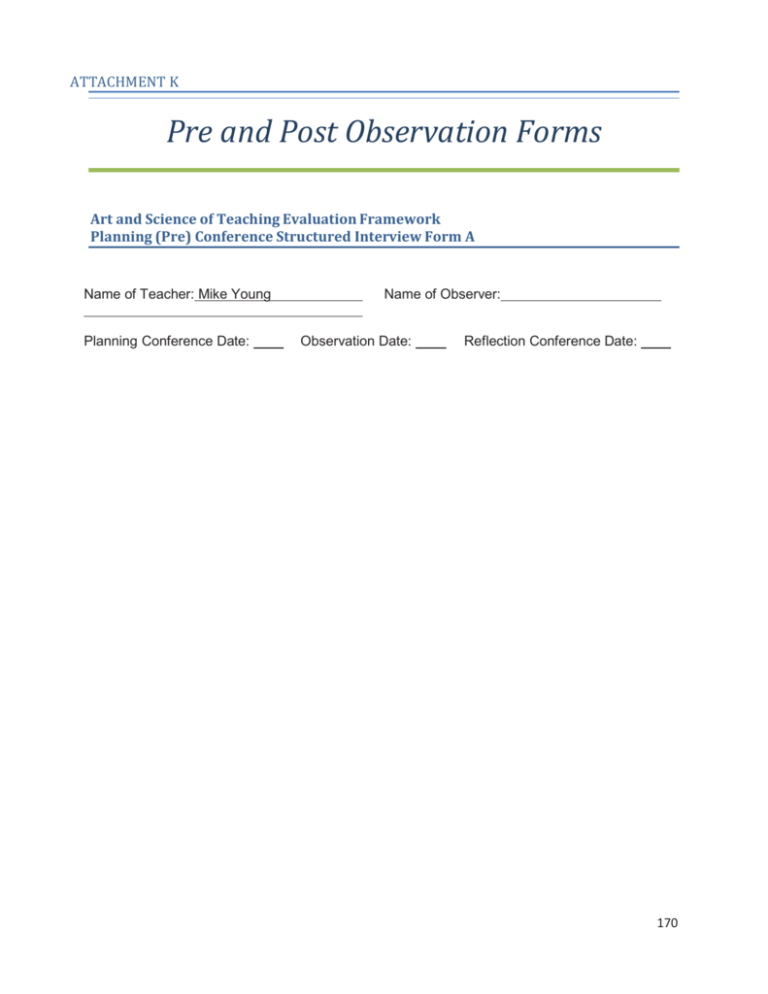
ATTACHMENT K Pre and Post Observation Forms Art and Science of Teaching Evaluation Framework Planning (Pre) Conference Structured Interview Form A Name of Teacher: Mike Young Planning Conference Date: Name of Observer: Observation Date: Reflection Conference Date: 170 Instructions: Please attach your lesson plan, assessments, scoring guides, and/or rubrics to this document. Please be prepared to discuss the following questions in preparation for the planning conference Classroom Demographics 1. Briefly describe the students in your classroom (e.g., number of students, gender, special needs, etc.) Answer: My 1st hr class has 30 students in there, with a good mixture of males to females. The class has a high number of novice lifters. We spent a lot of time on form, technique and explaining lifts the 1st nine weeks of school. Planning and Preparing for Lessons and Units 2. How will you scaffold the content within the lesson? Please describe: the rationale for how the content of the lesson is organized the rationale for the sequence of instruction how the content is related to previous lessons, units or other content possible confusions that may impact the lesson Answer: The students were assigned a platform and a beginning workout at the beginning of the year. The workout schedule is a 6 day workout. It progress from arms to legs to cardio. There are two sets of arm, leg and cardio workouts. The workout cycle last 8 weeks. It changes after each 6 days. The amount of reps and %’s of lifts stay the same over the course of 6 days. As each cycle goes by, it progressively gets more difficult. Confusion sets in, when myself or a student is absent. They don’t go back to where they missed, the workout progression continues when they are absent. 3. How does this lesson progress within the unit over time? Please describe: how lessons within the unit progress toward deep understanding and transfer of content describe how students will make choices and take initiative how learning will be extended Answer: The lesson progress over the course of 8 weeks. With each cycle getting more difficult. The students have to decide how much they can max out on each core lift after 8 weeks. The choice is, do they really want to get stronger and make it more difficult, or make it easier and not max as much so their workouts aren’t as hard. The students need to understand which lifts they’re better at, or their form is better, which makes the lift easier. 4. How will you align this lesson with established content standards identified by the district and the manner in which that content should be sequenced? Please describe: important content (scope) identified by the district sequence of the content to be taught as identified by the district Answer: Our content and lessons are through the bigger, faster, stronger program. The lessons are adjusted to students abilities and are graded based on improvements throughout the school year. Students keep chart each core lift and aux. lift they participate in daily. These charts show progression of improvement throughout each semester. Planning and Preparing for Use of Resources and Technology 171 5. How will the resources and materials that you select be used to enhance students’ understanding of the content? Please describe the resources that will be used: traditional resources technology Answer: Traditional resourses used will be workout sheets, charts, workout percentage charts. The students are able to understand their workouts by charting them daily on their workout sheets. They can visualize their daily assignments and see their progression throughout the school year. They will be able to see where they’ve taken time off or if they’ve continued working to the best of their ability, by the improvements in their max, completing workouts and their auxiliary lifts. Students use several forms of technology in the weight room, with the biggest one biggest one being the heart rate monitors. These monitor the heart rate of the students while they’re on the cardio machines. It’s designed to measure how long they spend in their Target Heart Rate Zone. If they’re supposed to be on for 25 minutes, and if they’re in their zone for 85% of that time, their grade is a B for that cardio assignment. If they spend less time, then the grade drops. We also have the Body Mass Scale. Students will weigh in at beginning of each 9 weeks. They’ll have a goal for body fat %. The scale will then measure their bmi, ffm, and body fat %. Students are Planning and Preparing for theprint Special Needs of Students expected to keep track of these outs to monitor their progress. 6. How do you plan to address the special needs of your students to include special education students, ELL students and students who come from home environments that offer little support for schooling? Please describe: specific accommodations that will be made Answer: The students who need special accommodations will be allowed to workout at their pace or on modified lifts. There are some lifts that can be done in a modified fashion rather than normal technique and form wise. They can max out in the modified core lifts, also, that way there’s less risk to injury. These students can also be provided extra assistance with help from the teacher or students who are advanced according to the rubric. Students who cannot provide their own P.E. clothes, we can assist them with that. I can provide p.e. clothes for those who need them, that way they’re able to participate in activities rather than sit out and take a bad grade. 172 Art and Science of Teaching Evaluation Framework Reflection (Post) Conference Form B Name of Teacher: Mike Young Planning Conference Date: Name of Observer: Robert Murphy Observation Date: Reflection Conference Date: Instructions: Please bring student work, assessments, scoring guides, and/or rubrics to the reflection conference and be prepared to discuss the following questions General Reflection Overall, how do you think the lesson went and why? Answer: Routine Events 1. In what ways did students meet or not meet the learning goals you established for this lesson? How did your assessments inform your understanding of student learning? Answer: Content 2. How did the strategies you used to introduce new content to students support student learning? Answer: Enacted on the Spot 3. Which techniques for engaging students were most successful? Which techniques were not successful? Answer: 4. How will this lesson inform changes to your instructional plan? Answer: 173
